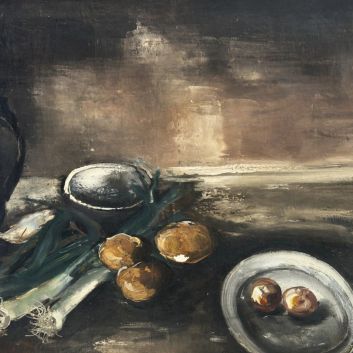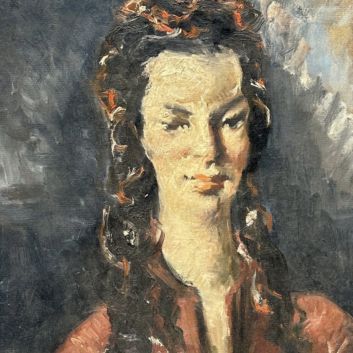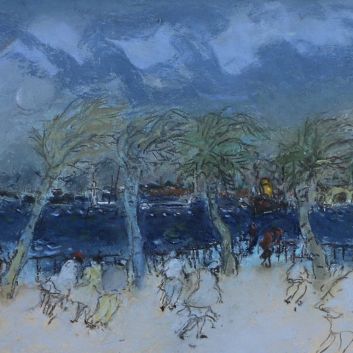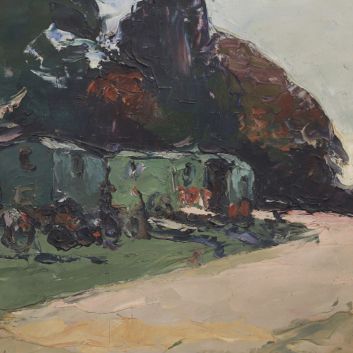Rating and value of paintings by Oskar Kokoschka
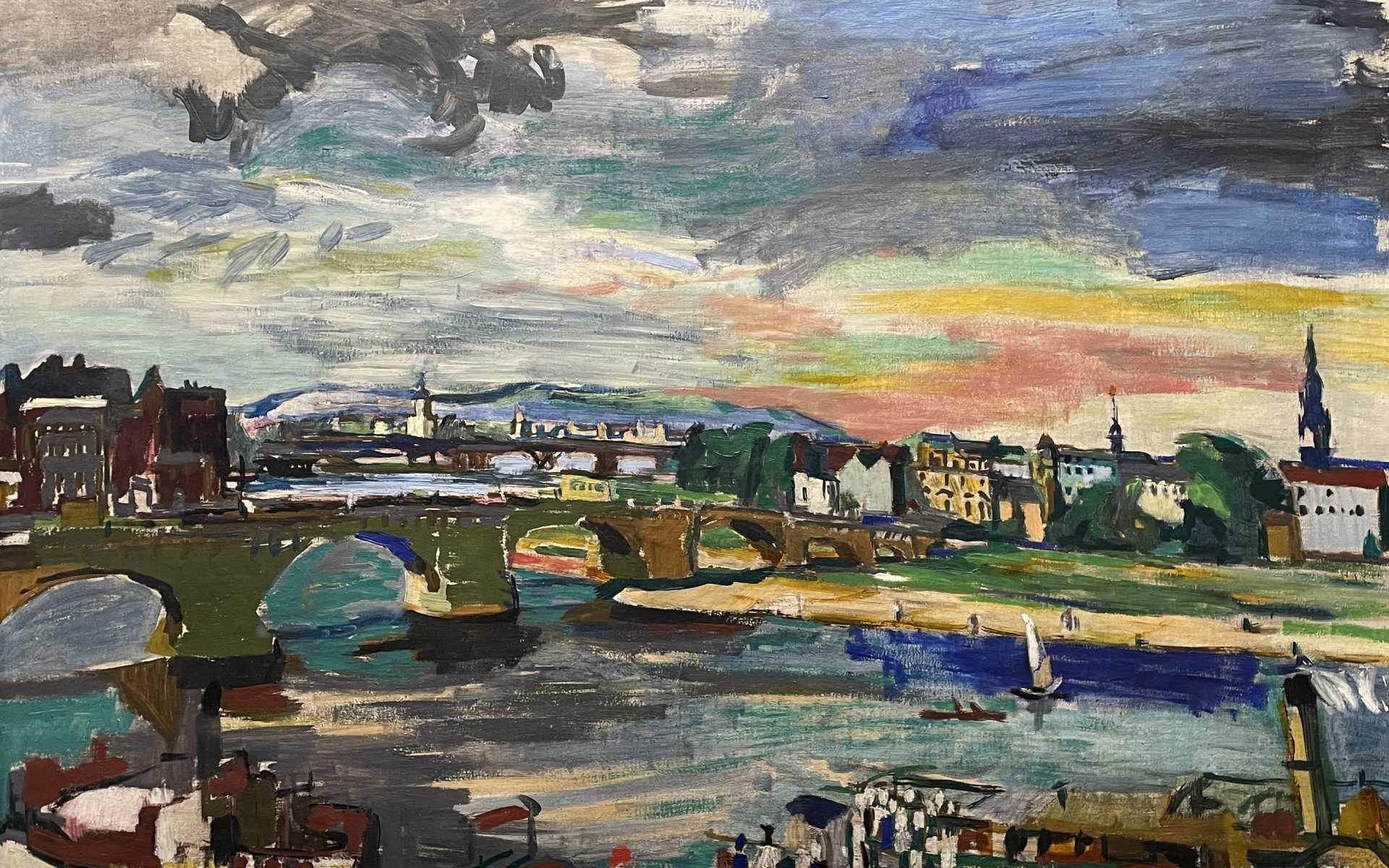
If you own a work by or based on the artist Oskar Kokoschka and would like to know its value, our state-approved experts and auctioneers can help you.
Our specialists will carry out a free appraisal of your work, and provide you with a precise estimate of its value on today's market. Then, if you wish to sell your work, we will guide you towards the best possible means of obtaining the best possible price.
Artist's rating and value
Oskar Kokoschka's value on the art market is extremely high. His most prized works are his expressionist canvases, both portraits and landscapes. The artist is particularly prized among 20th-century Austrian painters and draughtsmen. Oskar Kokoschka's works sell for between €10 and €15,832,000 at auction.
In 2018, his painting Joseph de Montesquiou-Fezensac (oil on canvas), dating from 1910, fetched €15,832,000, while it was estimated at between €13,342,000 and €17,788,000.
Order of value from the most basic to the most prestigious
Technique used | Results |
|---|---|
Sculpture - volume | From €400 to €7,600 |
Print - multiple | From €10 to €104,000 |
Drawing - watercolor | From €20 to €630,000 |
Paint | From €600 to €15,832,000 |
Response in less than 24h
Artist's style and technique
Oskar Kokoschka, a key figure of Expressionism, produced works that bear witness to the turmoil and upheavals of the first half of the 20th century.
Born in Vienna, this painter was influenced by the great masters of his time, notably Gustav Klimt and Carl Otto Czeschka, with whom he acquired a solid training. His art, however, soon took a very distinct direction.
Unlike his Viennese contemporaries, Kokoschka did not seek to flatter, but to reveal, which earned him a reputation as a provocateur. His portraits, often commissioned by the Viennese elite, reflect a ruthless eye for his models, whom he does not hesitate to depict with disarming brutality.
Very early on, his works were marked by intense colors, bold contrasts and frequent use of black, which he applied in broad flat tints, giving his canvases a dramatic and sometimes oppressive dimension.
Arnaud Schönberg sums up this approach perfectly when he says that Kokoschka favors truth over beauty. Indeed, the artist seems intent on capturing not only the appearance but also the tormented soul of his subjects, revealing their flaws and anxieties with an unsettling sincerity.
This quest for authenticity is reflected in a dark palette, dominated by cold, earthy tones, often enhanced by touches of bright red or yellow, as if to underline the tension that inhabits his compositions.
His nervous, energetic brushstrokes convey a kind of restrained violence, as if he wanted to extract the suffering hidden within reality.
However, Kokoschka's style evolved over the years, influenced by the political and social events of his time. Faced with the rise of Nazism, he adopted an attitude of defiance and resistance.
His refusal to conform to the expectations of official, regime-controlled art made him a favorite target of the Nazi authorities.
His works, judged too subversive, were exhibited in 1937 at the famous Degenerate Art Exhibition in Munich, where they rubbed shoulders with the creations of other artists rejected for their non-conformism.
Far from being intimidated, Kokoschka continued his critique with paintings that forcefully denounced the brutality and absurdity of totalitarian regimes. Kokoschka's audacity was unshakeable, using his brush as a weapon against oppression, refusing to make any concessions to a system he deemed dehumanizing.
Thus, Oskar Kokoschka's career remains marked by an inseparable aesthetic and political commitment, where each painting becomes a space of struggle, a revolt against lies and compromise.
His work, deeply marked by the dramas of his time, remains a poignant testimony to the tormented history of the 20th century, oscillating between light and shadow, beauty and raw truth.
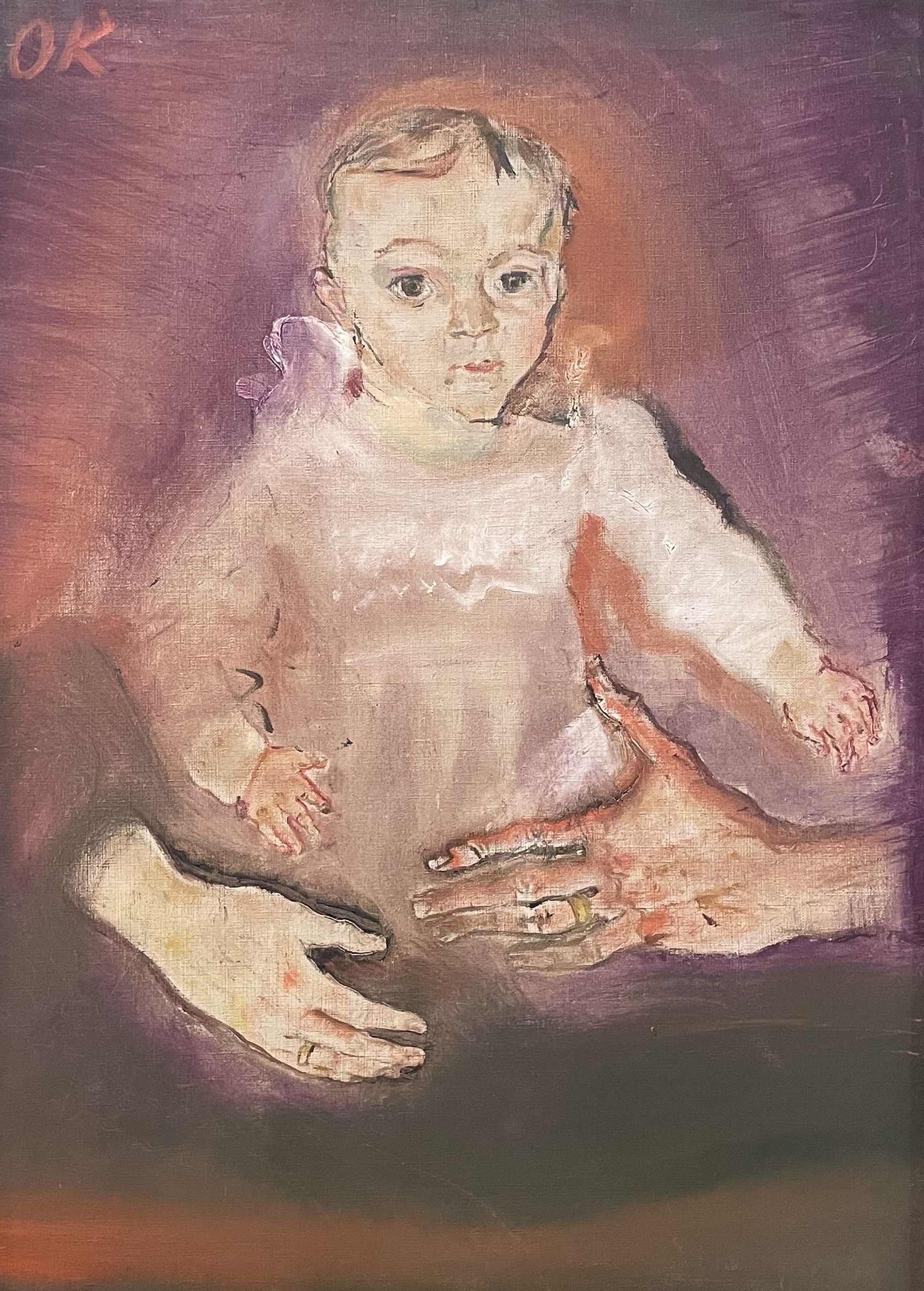
Oskar Kokoschka, humanist painter of anguish
Oskar Kokoschka (1886-1980) was a 20th-century Austrian painter and playwright, renowned for his unique Expressionist style.
Born into a modest family in Pöchlarn, he was encouraged by his mother to take early classes at the Vienna Academy of Fine Arts, where he quickly distinguished himself for his bold technique and intense, psychological approach to portraiture.
Strongly influenced by the Viennese art movements of his time, he met Gustav Klimt, who exerted a major influence on his work, particularly in his use of color and form.
From 1909, Kokoschka became a central figure in the Viennese Secession, a group of artists who rejected academic conventions in favor of freer, more personal expression.
His art is distinguished by a deep psychological vision of his subjects, which he translates into his portraits with vigorous brushstrokes and vivid colors, often used to convey the soul of his models.
His relationship with Alma Mahler, whom he famously portrays in a portrait, marks a particularly intense period in his work. This portrait is one of Kokoschka's most emblematic, capturing the complexity of his model with such expressive force that the image seems almost alive.
Kokoschka's involvement in the First World War was a major turning point in his career. After being severely wounded, he returned to painting with a new rage, exploring physical and emotional suffering in his works.
His creative process resembles that ofOtto Dix, Geroges Rouault or Amedeo ModiglianiThese three artists were all war-wounded and needed to express their suffering and their vision of war through painting.
It was during this period that he created the Les Fantômes series, a body of work marked by distorted figures and dark colors, representing the pain and debris of war. His work, now more tormented, explores themes of loss, memory and human violence.
Exiled to Prague and then London after the Anschluss in 1938, Kokoschka continued his artistic work outside Austria. Far from his native land, his art became more introspective, marked by a sense of isolation and nostalgia.
His portraits, often large-scale, continue to reflect his quest for psychological truth, while his landscapes become increasingly allegorical, exploring themes of exile and absence.
Kokoschka's work, at once tumultuous and profoundly human, makes him a major figure of Expressionism. His unique approach to color, form and psychology enables him to capture the emotional intensity of his subjects, offering us a radical vision of the human condition in the 20th century.
Oskar Kokoschka - Humanist painter of anguish
Focus on The Wind Bride, 1913, Oskar Kokoschka
With its intense sensuality, Oskar Kokoschka's Bride of the Wind immediately plunges the viewer into a whirlwind of contradictory emotions.
This work depicts Alma Mahler, the artist's passionate love, in a posture that is both gentle and unsettling, where the beauty of her face seems to flit through the air like a fleeting vision.
The features of her face, accentuated by bold, lively brushstrokes, are shrouded in an aura of mystery, as if the artist were trying to capture the very essence of being, while leaving an element of inaccessibility hanging in the air.
The texture of the skin, almost palpable, seems to vibrate under the tension of the colors, a mixture of warm reds and yellows that evoke both passion and suffering.
The painting's background, all shades of blue and green, contrasts powerfully with the central subject. This blurred, almost ethereal backdrop reinforces the impression of floating, as if Alma's portrait were suspended between the earthly world and the beyond.
This vagueness lends the work a dreamlike, almost unreal dimension that echoes the painter's inner torments.
The central figure's posture, with her eyes barely open, seems both serene and tragic. The image of Alma Mahler becomes a symbol of desire, aspiration and escape.
With this portrait, Kokoschka captures the essence of his tumultuous love and doomed relationship, while providing space for the female figure to dissipate into the air, like a light but inexorable mist.
The artist's gaze seems to pierce beyond appearance, highlighting a profound psychological fragility. The intensity of the warm colors juxtaposes the coldness of the background, accentuating the tension between carnal love and the pain inherent in a relationship marked by loss.
Each brushstroke seems, in reality, an inner struggle to grasp and hold that which cannot be possessed, to freeze a fleeting, elusive beauty.
With this work, Kokoschka invites us to explore the intricacies of the human soul, the illusion of possession and the fragility of desire. The treatment of light, both intense and diffuse, seems at times to erase the model's individuality, transforming her into a universal symbol of love and sorrow.
Kokoschka's work ends in a silent breath, confronting us with a painful truth: the intensity of passion, however beautiful, can only be ephemeral, doomed to disappear into the wind.
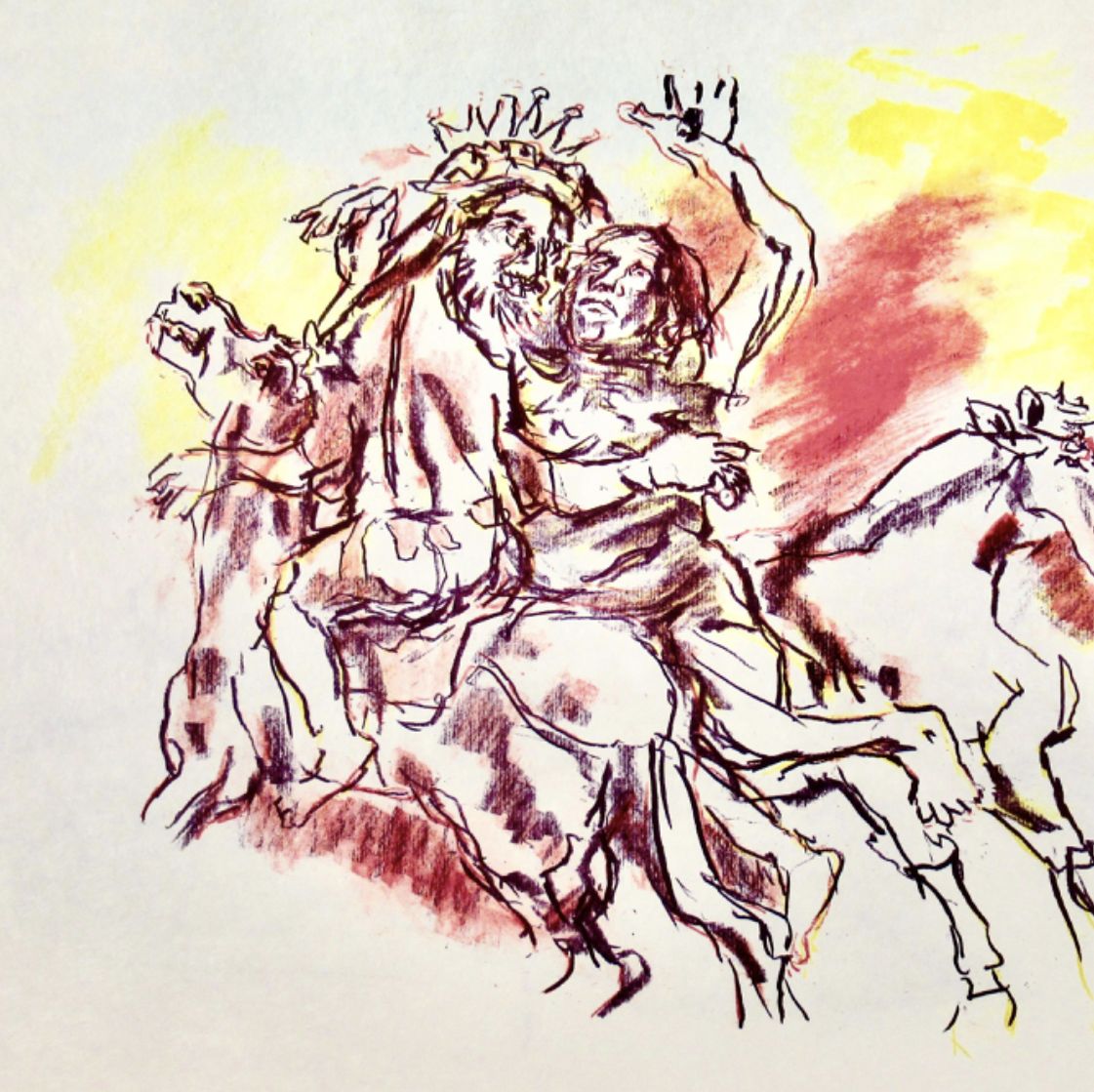
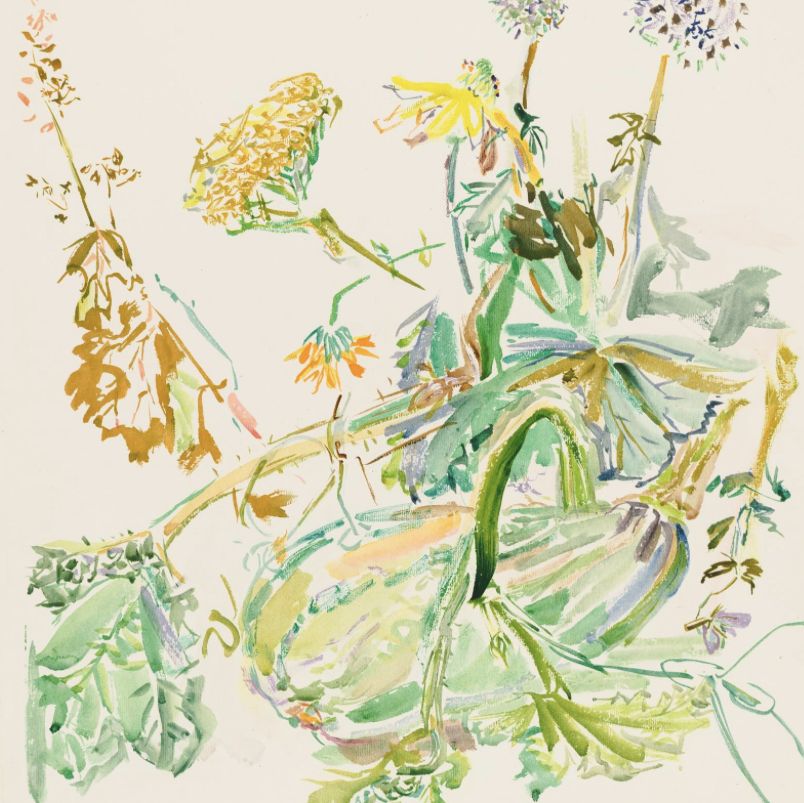
His signature
Although there are variations, here is a first example of its signature:
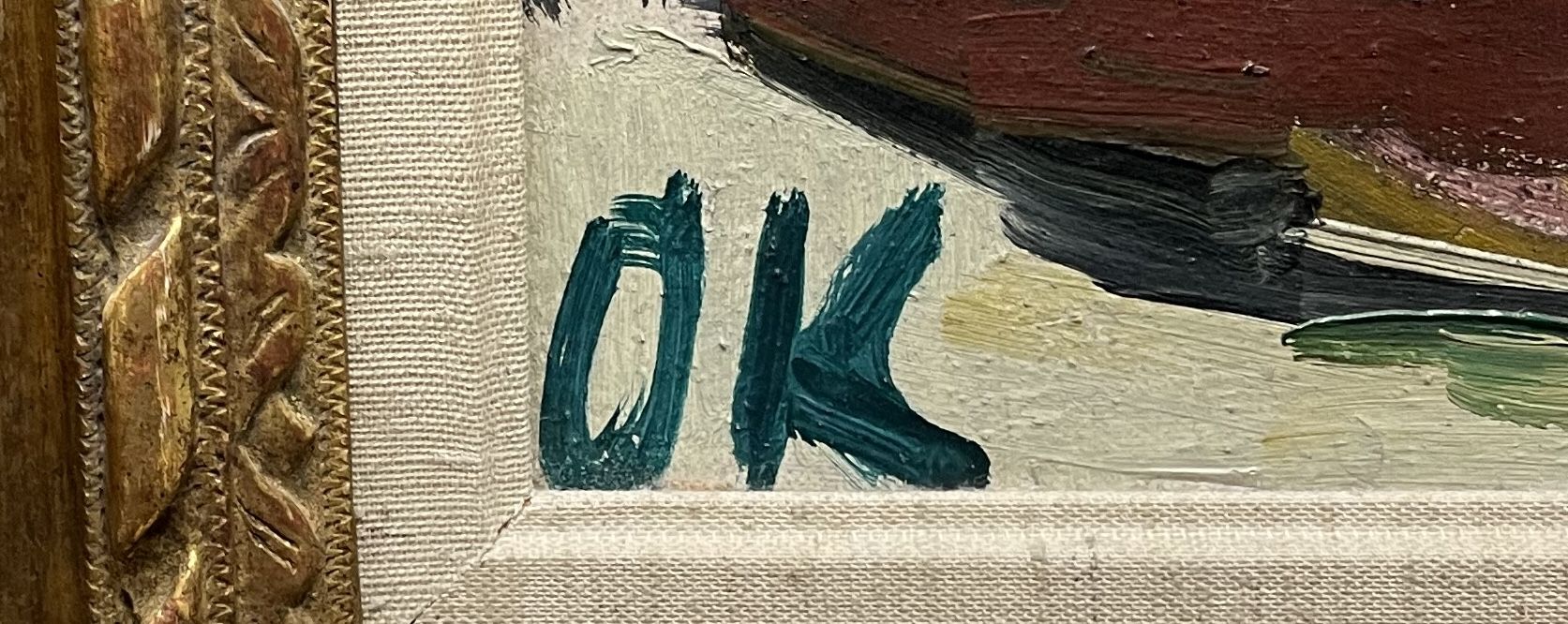
Appraising your property
If you happen to own a painting by Oskar Kokoschka or one based on the artist, don't hesitate to ask for a free estimate by filling in our form on our website.
A member of our team of experts and certified auctioneers will contact you promptly to provide you with an estimate of the value of your work, as well as any relevant information about it.
If you're thinking of selling your work of art, our specialists can also help you find alternatives to sell it at the best possible price, taking into account the market's inclinations and specificities.
Response in less than 24h
Related topics

Rating and value of sculptures and bronzes by François-Xavier La...
François-Xavier Lalanne is a renowned and talented 20th-century sculptor whose works have skyrocketed in value at auction.
Read more >

Rating and value of tables, coffee tables, desks by Pierre...
Pierre Chapo is an emblematic 20th-century designer who has produced works that are listed and valued on the auction market.
Read more >
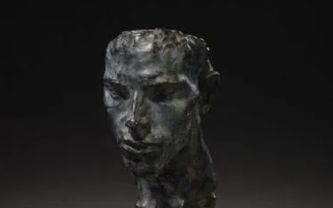
Rating and value of sculptures and bronzes by Arno Breker
Arno Breker is a twentieth-century neoclassical sculptor whose sculptures and bronzes are highly valued at auction.
Read more >
Secure site, anonymity preserved
State-approved auctioneer and expert
Free, certified estimates
